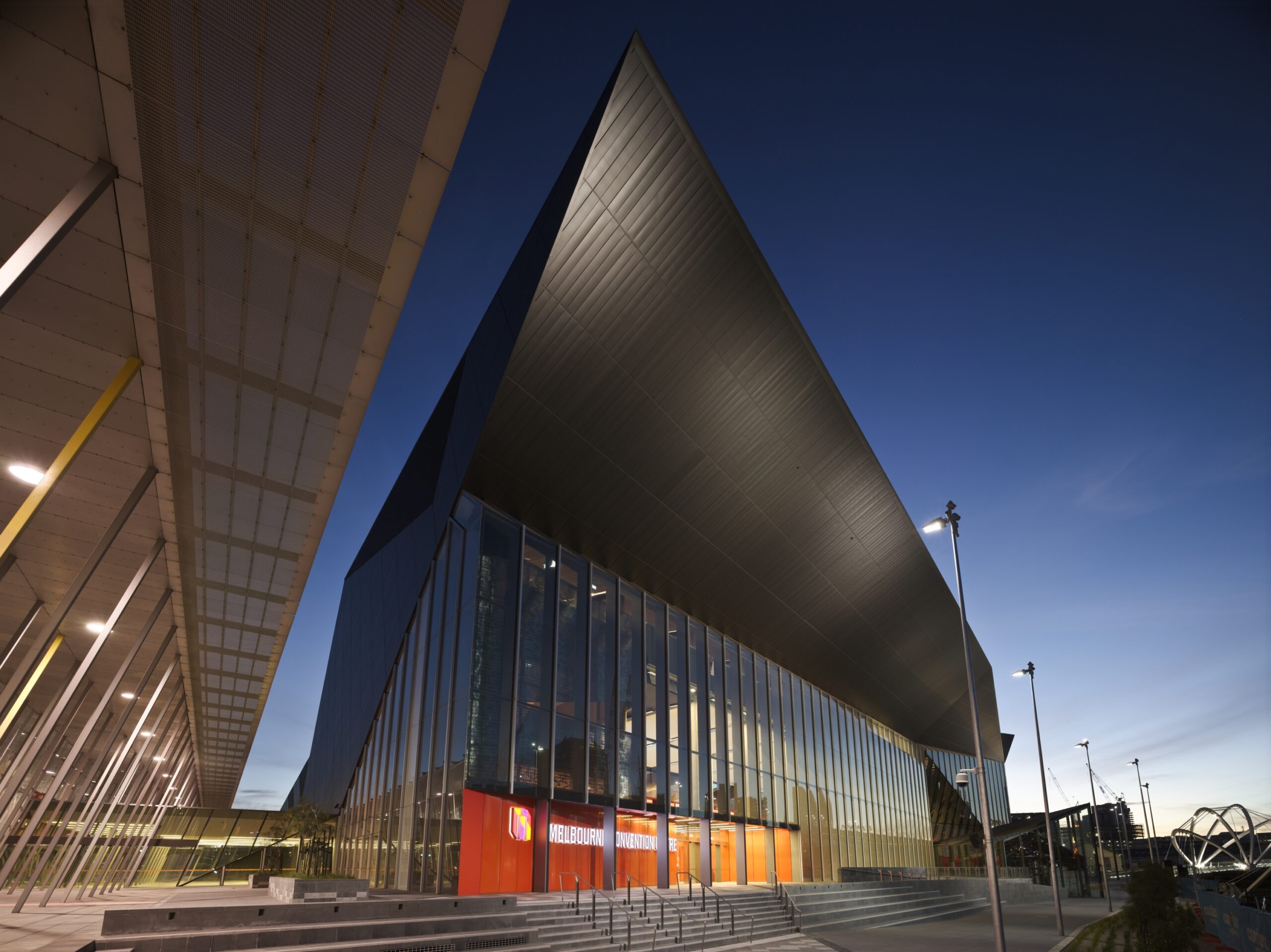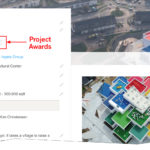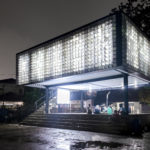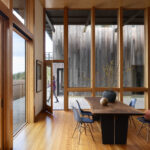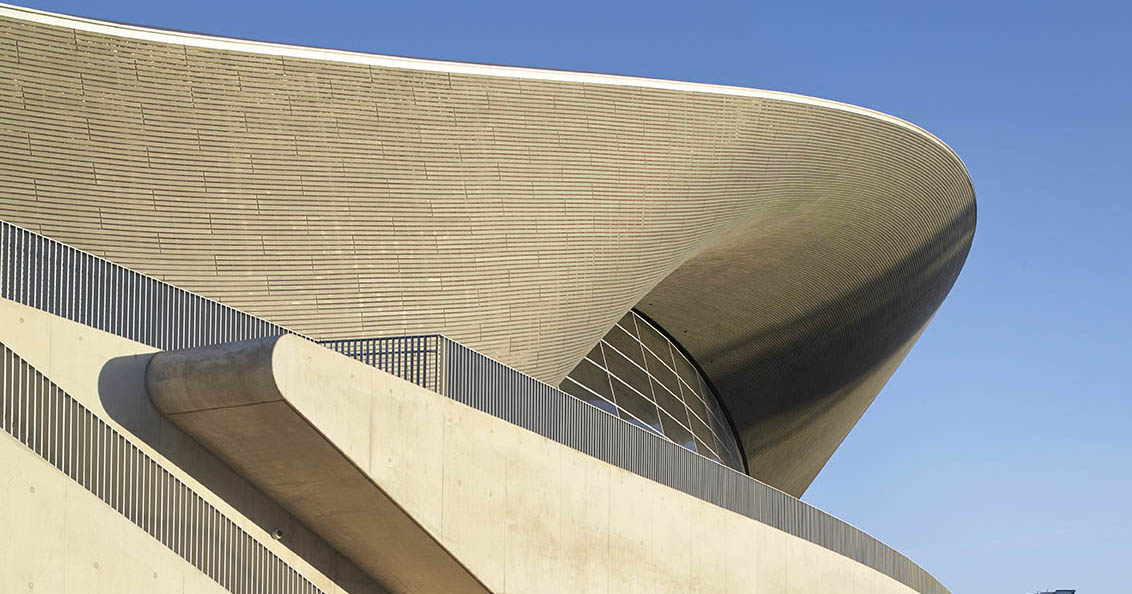Architects: Want to have your project featured? Showcase your work through Architizer and sign up for our inspirational newsletters.
Few cities combine history, culture and innovation like Melbourne. As the “cultural capital” of Australia, the city’s buildings are iconic landmarks. From its historic structures to its contemporary skyscrapers, Melbourne’s architecture blends building techniques and modern design approaches. The city’s commitment to preserving its architectural history while embracing contemporary design is evident in how new buildings complement and enhance the existing urban fabric, creating a blend of past and present. The cityscape is dotted with striking examples, from Federation Square to Eureka Tower.
Melbourne’s reputation as a hub for contemporary architecture is exemplified by the following projects, an impressive collection of buildings that have shaped the city’s skyline and identity. Indeed, Melbourne has become a showcase of innovative architecture, attracting visitors and architects from around the world. Today, these buildings and structures tell a story of design, creativity and Melbourne’s culture.
Melbourne School of Design, University of Melbourne
By John Wardle Architects and NADAAA, Melbourne, Australia
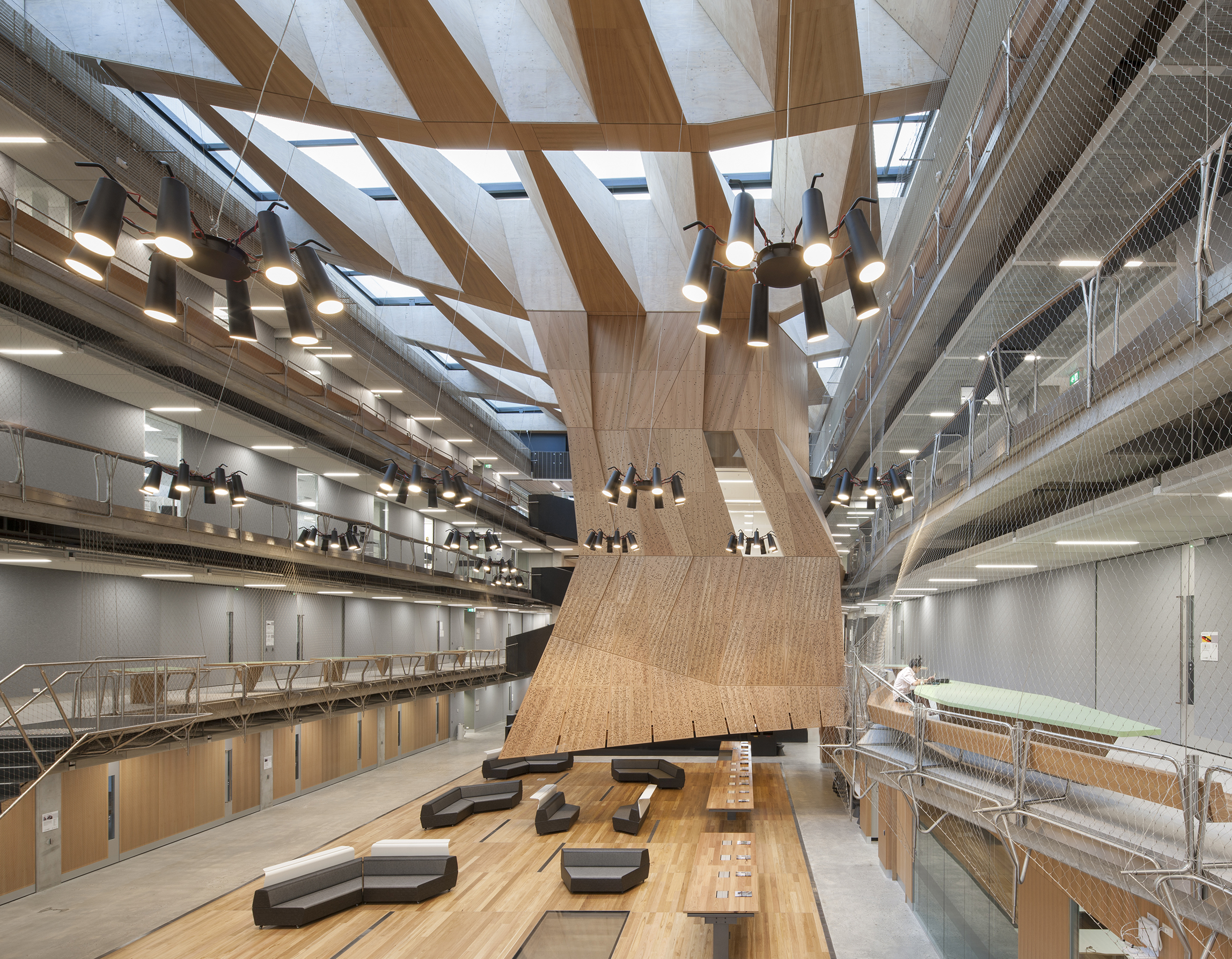
 The building comprises six levels and meets its briefed area and budget targets, encompassing two lecture theaters, a workshop, library, two exhibition spaces, a cafe, a series of studios over three levels, a studio hall and a range of associated academic and professional workspaces.
The building comprises six levels and meets its briefed area and budget targets, encompassing two lecture theaters, a workshop, library, two exhibition spaces, a cafe, a series of studios over three levels, a studio hall and a range of associated academic and professional workspaces.
The Studio Hall, a large, flexible space designed for informal use throughout the day, is central to the design. Enclosed by the former Bank of New South Wales façade to the west and overlooking the new courtyard to the east, the Studio Hall is spatially framed by the heritage façade of the Elisabeth Murdoch building. A coffered timber roof mediates natural daylight and aids natural ventilation within.
Melbourne Quakers Centre
By Nervegna Reed Architecture and pH architects, Melbourne, Australia

 The Quakers Centre in Melbourne, a renovation and addition to a 1960s office building, is a unique space. Situated on a triangular wedge of land between Melbourne’s grids, the design features shifting asymmetrical circles that symbolize the transition between the city and suburbs.
The Quakers Centre in Melbourne, a renovation and addition to a 1960s office building, is a unique space. Situated on a triangular wedge of land between Melbourne’s grids, the design features shifting asymmetrical circles that symbolize the transition between the city and suburbs.
The building’s understated design reveals the original structure while incorporating subtle interventions like the worship space, library seat and balcony. The worship area, symbolized by a circle, is a flexible, wall-less space that connects with the sky through a skylight, creating a serene environment on the city’s edge. Avoiding traditional church symbolism, the design aims for an anti-church feel, blending new elements with the existing structure to create a contemplative space that bridges the spiritual and everyday realities.
Trinity College Gateway Building
By McIldowie Partners, Melbourne, Australia


The Trinity College Gateway Building marks a significant physical link between Trinity College and the University of Melbourne. It accommodates Trinity’s 300 residents, 50 theological students, and 1800 Foundation Studies students, offering 25 tutorial rooms with breakout spaces, drama studios, student amenities, and a 300-seat auditorium.
Internally, the building features a clear-glazed atrium that enhances natural light and ventilation, serving as a functional and visual link between the two street addresses. The design incorporates a restrained color palette and faceted timber paneling, creating serene, light-filled spaces that exude warmth and timelessness. To achieve this, extensive computer modeling and a complex structural framework were employed, particularly for the timber paneling used in the central atrium and the state-of-the-art 300-seat auditorium.
South Melbourne Market External Food Hall
By Bourke and Bouteloup Architects, Melbourne, Australia

 The External Food Hall at the South Melbourne Market is an innovative addition, utilizing previously unused space next to the main food hall. Designed with Design for Manufacture and Assembly principles, the structure minimizes construction time and disruption to the bustling market. The timber diagrid elements were precision-fabricated off-site before assembly, while timber ‘A’-frames serve as columns, spreading loads and reducing the need for extensive footings.
The External Food Hall at the South Melbourne Market is an innovative addition, utilizing previously unused space next to the main food hall. Designed with Design for Manufacture and Assembly principles, the structure minimizes construction time and disruption to the bustling market. The timber diagrid elements were precision-fabricated off-site before assembly, while timber ‘A’-frames serve as columns, spreading loads and reducing the need for extensive footings.
The canopy is a lasting symbol of the market, with its sloping roof and tapered plan creating a visually appealing, flattened appearance. The ‘A’-frames not only frame views in and out of the space but also offer an intimate dining experience with bench tops integrated into the frame.
Melbourne Convention & Exhibition Centre
By Woods Bagot, Melbourne, Australia

 The Melbourne Convention Center Development stands as a pivotal point in the city’s growth, serving as a catalyst for downtown redevelopment and earning accolades for its sustainability with a 6 Star Green Star Energy Rating, a first for a project of its type and scale. The new building has revitalized the waterfront, offering a vibrant public space. Central to its design is a large, flexible multi-function hall seating 5,000, which can be subdivided to accommodate various functions.
The Melbourne Convention Center Development stands as a pivotal point in the city’s growth, serving as a catalyst for downtown redevelopment and earning accolades for its sustainability with a 6 Star Green Star Energy Rating, a first for a project of its type and scale. The new building has revitalized the waterfront, offering a vibrant public space. Central to its design is a large, flexible multi-function hall seating 5,000, which can be subdivided to accommodate various functions.
This iconic infrastructure project was envisioned to embody Melbourne’s artistic spirit, providing a communal space for thought leaders to convene. The addition of a triangular structure to the square-shaped original Banquet Hall symbolizes this artistic fusion.
CH2 Melbourne City Council House 2
By DesignInc, Melbourne, Australia
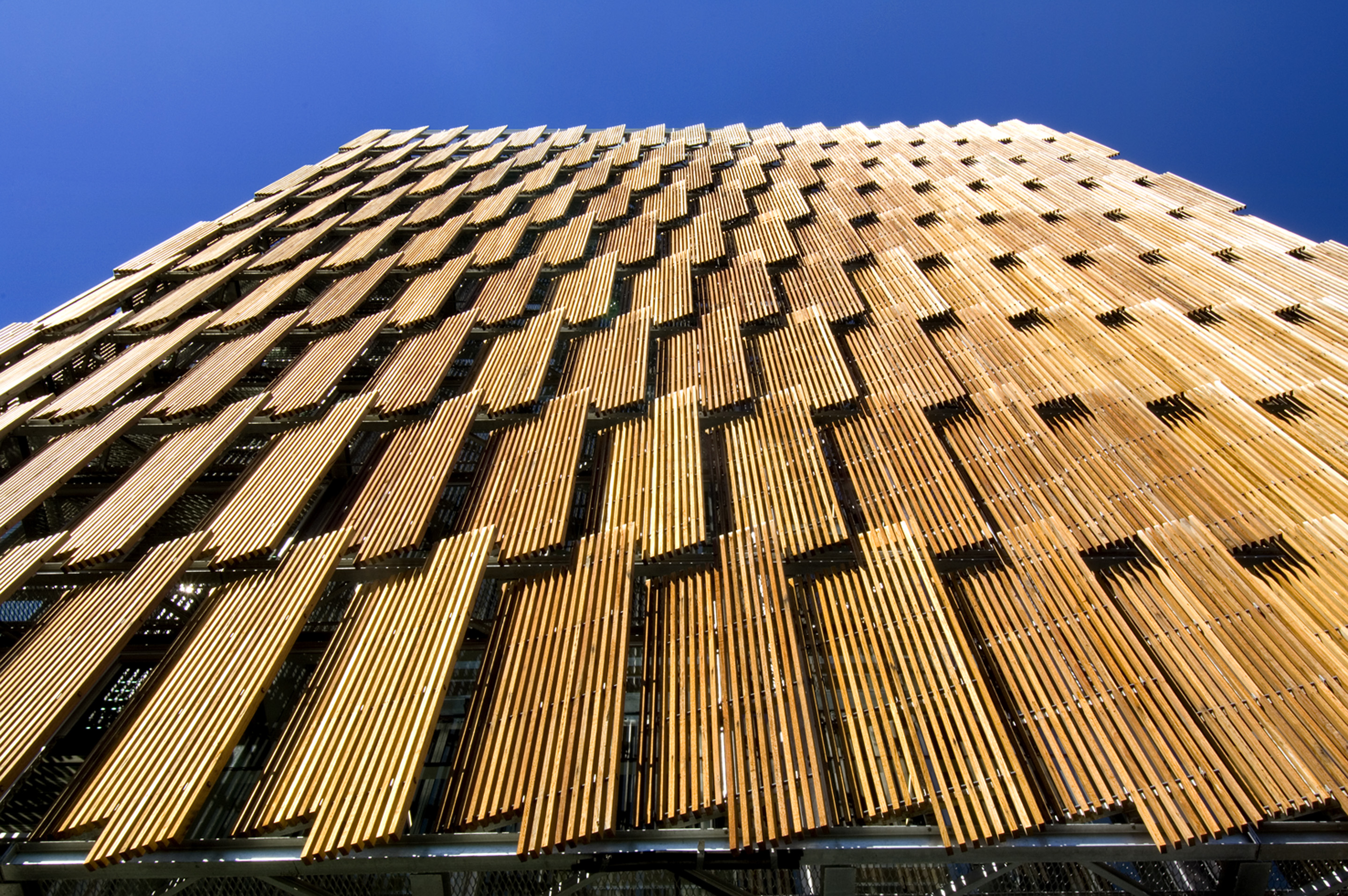
 Designed collaboratively with the City of Melbourne, Council House 2 (CH2) was conceived as a holistic system, engaging its occupants as active participants. CH2 was developed as part of the City of Melbourne’s initiative to achieve zero emissions by 2020, with a focus on reducing energy consumption in commercial buildings by 50%.
Designed collaboratively with the City of Melbourne, Council House 2 (CH2) was conceived as a holistic system, engaging its occupants as active participants. CH2 was developed as part of the City of Melbourne’s initiative to achieve zero emissions by 2020, with a focus on reducing energy consumption in commercial buildings by 50%.
As a pilot project, CH2 serves as a model for sustainable urban development, aiming for passive energy reliance while maintaining premium-grade standards. The building’s architectural elements, such as climate-moderating façades and integrated ventilation ducts, draw inspiration from nature, while its innovative concrete floor structure contributes to efficient heating and cooling. CH2 sets a benchmark in sustainable design, being the first new commercial office building in Australia to exceed the Green Building Council of Australia’s six-star rating system.
North Melbourne Primary School Stage 3
By Workshop Architecture, Melbourne, Australia


 The final stage of a three-stage master plan by Workshop Architecture in 2004, this project replaces seven relocatable classrooms with a purpose-built, two-story teaching facility at Errol Street Primary. The new building’s alignment along its northern edge preserves views of the original heritage school building and opens the existing courtyard onto a new play area, creating a forecourt. The stepped roofline reduces the building’s scale against the playground and heritage building while allowing sunlight deep into the floor plan.
The final stage of a three-stage master plan by Workshop Architecture in 2004, this project replaces seven relocatable classrooms with a purpose-built, two-story teaching facility at Errol Street Primary. The new building’s alignment along its northern edge preserves views of the original heritage school building and opens the existing courtyard onto a new play area, creating a forecourt. The stepped roofline reduces the building’s scale against the playground and heritage building while allowing sunlight deep into the floor plan.
Innovative solutions were crucial to achieving exemplary outcomes within a tight budget. The project adopts the ‘activity-based team teaching’ model, creating internal playground-like spaces for learning. An innovative mixed-mode air conditioning and ventilation system controls temperature, air quality and CO2 levels, using heat exchange ventilation units to provide fresh air with minimal energy loss in hot or cold weather.
Bunurong Chapel
By Tilt Industrial Design, Melbourne, Australia


 TILT was tasked with designing, manufacturing and installing an operable glass façade for this chapel. The innovative design features three large curved windows that, when closed, form a floor-to-ceiling glass window and, when open, slide down to waist height to create a balustrade.
TILT was tasked with designing, manufacturing and installing an operable glass façade for this chapel. The innovative design features three large curved windows that, when closed, form a floor-to-ceiling glass window and, when open, slide down to waist height to create a balustrade.
Each curved window is raised and lowered by synchronized electric actuators. Positioned over a lake, the chapel’s cantilevered design allows patrons to enjoy open-air access to the environment or seek shelter from the elements, providing a unique facility capable of accommodating all weather conditions.
Shrine of Remembrance
By Rush Wright Associates, Melbourne, Australia


 The Shrine, one of Victoria’s most significant community memorials, marks the end of Melbourne’s main civic axis. Originally funded by donation, it has undergone two major stages of alterations and additions since its original construction in 1934, including the WW2 forecourt and the recent Visitor Centre and Galleries of Remembrance.
The Shrine, one of Victoria’s most significant community memorials, marks the end of Melbourne’s main civic axis. Originally funded by donation, it has undergone two major stages of alterations and additions since its original construction in 1934, including the WW2 forecourt and the recent Visitor Centre and Galleries of Remembrance.
The four courtyards, designed by Rush Wright Associates (RWA) and Ashton Raggatt McDougall, Architects (ARM), play a central role in the Shrine’s new project, each evoking and provoking different emotional responses, exploring themes like loss, memory, and military history.
Cirqua Apartments
By BKK Architects, Melbourne, Australia

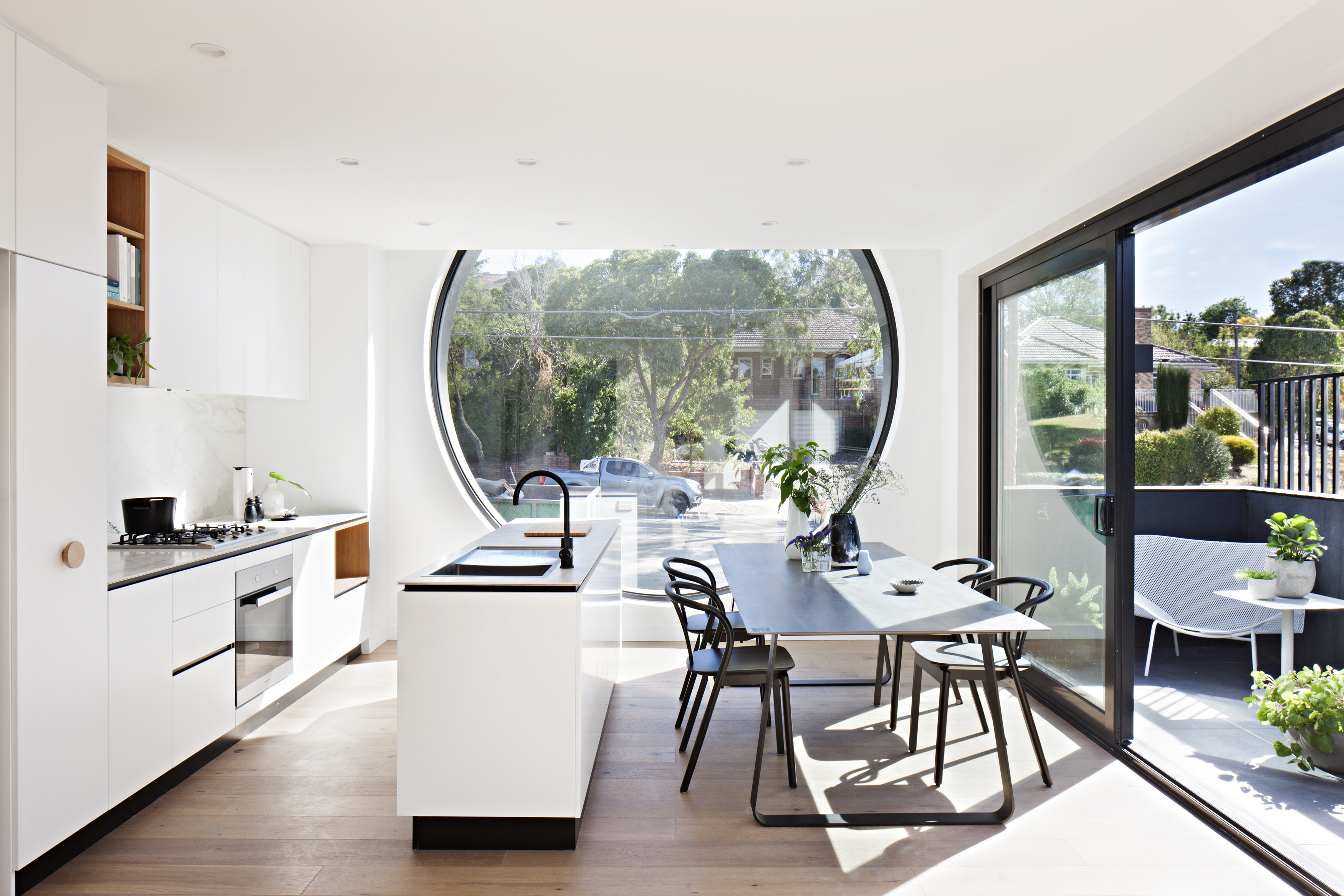 The Cirqua project represents a notable shift in the multi-residential market where buyers increasingly choose apartments over detached housing as a preference rather than a necessity. Unlike the past focus on the investment market or those unable to afford houses, Cirqua attracts mostly owner-occupiers. This shift is reflected in Cirqua’s design approach, offering larger apartments, diverse types (38 out of 42 are unique), spacious balconies, and ample landscaping, emphasizing dwellings as ‘homes’ rather than mere ‘products’.
The Cirqua project represents a notable shift in the multi-residential market where buyers increasingly choose apartments over detached housing as a preference rather than a necessity. Unlike the past focus on the investment market or those unable to afford houses, Cirqua attracts mostly owner-occupiers. This shift is reflected in Cirqua’s design approach, offering larger apartments, diverse types (38 out of 42 are unique), spacious balconies, and ample landscaping, emphasizing dwellings as ‘homes’ rather than mere ‘products’.
Located on a steeply sloping site, Cirqua consolidates two properties into a single block, ensuring a strong address for tenants while integrating seamlessly into its context. Highly articulated façades reduce the building’s mass, presenting a smaller scale and blending harmoniously with the surrounding streetscape.
Tanderrum Pedestrian Bridge
By John Wardle Architects and NADAAA, Melbourne, Australia

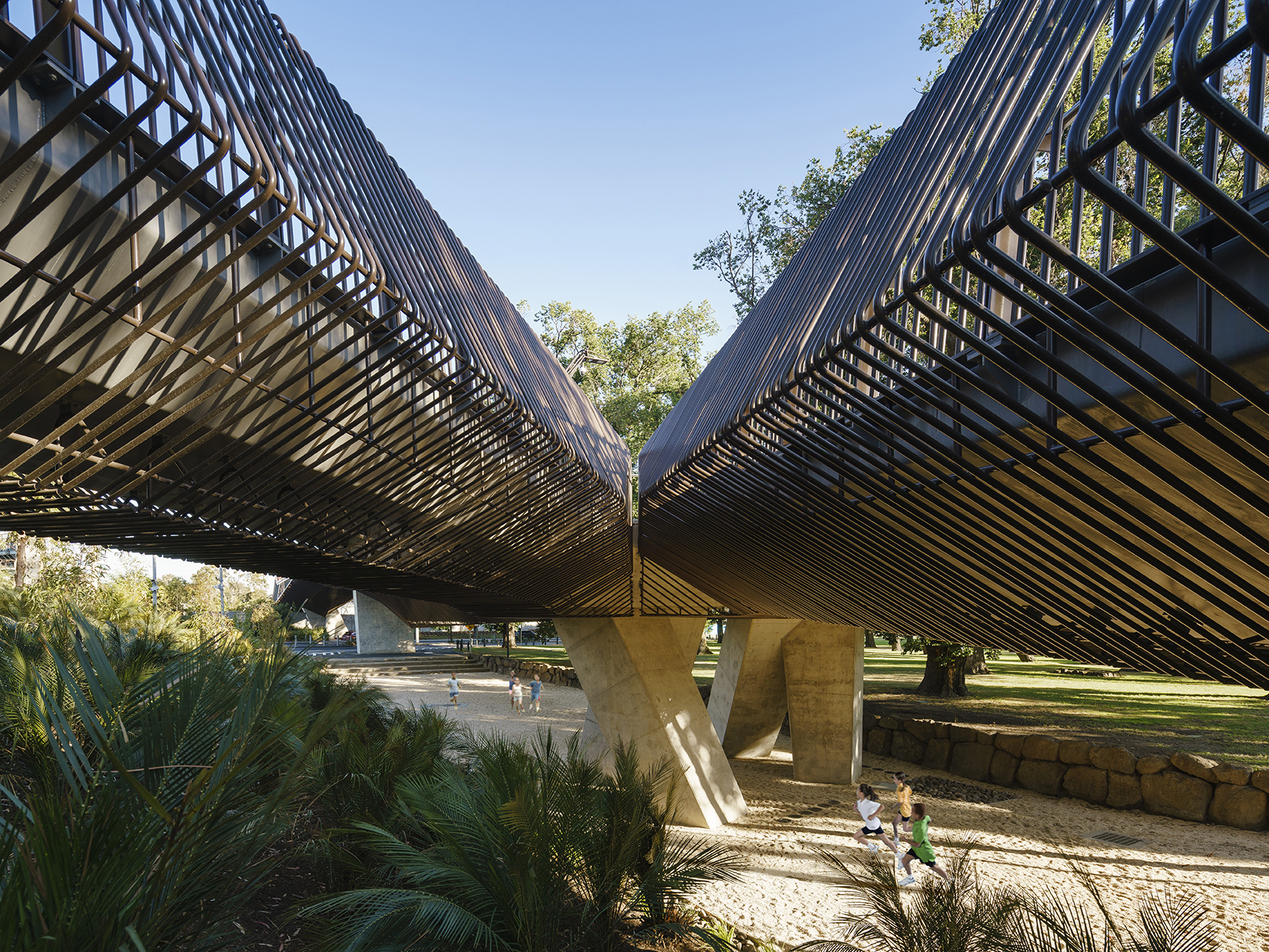 The Tanderrum Pedestrian Bridge, linking Birrarung Marr with the Melbourne Park sports precinct, serves as a prominent arrival point for Melbourne Park, particularly during the Australian Open. Its ramping pathway through Birrarung Marr respects the park’s established bridges and topography, providing a seamless connection.
The Tanderrum Pedestrian Bridge, linking Birrarung Marr with the Melbourne Park sports precinct, serves as a prominent arrival point for Melbourne Park, particularly during the Australian Open. Its ramping pathway through Birrarung Marr respects the park’s established bridges and topography, providing a seamless connection.
The design emphasizes a connection between the historic landscape of Speakers Corner and the tennis courts of Melbourne Park across Batman Avenue. The slender, flat steel girder structure of the bridge tapers at the edges to span Batman Avenue, with an undercroft that follows the existing landscape slope. This design integrates the bridge into the landscape, offering a journey that branches into a scenic views.
Architects: Want to have your project featured? Showcase your work through Architizer and sign up for our inspirational newsletters.